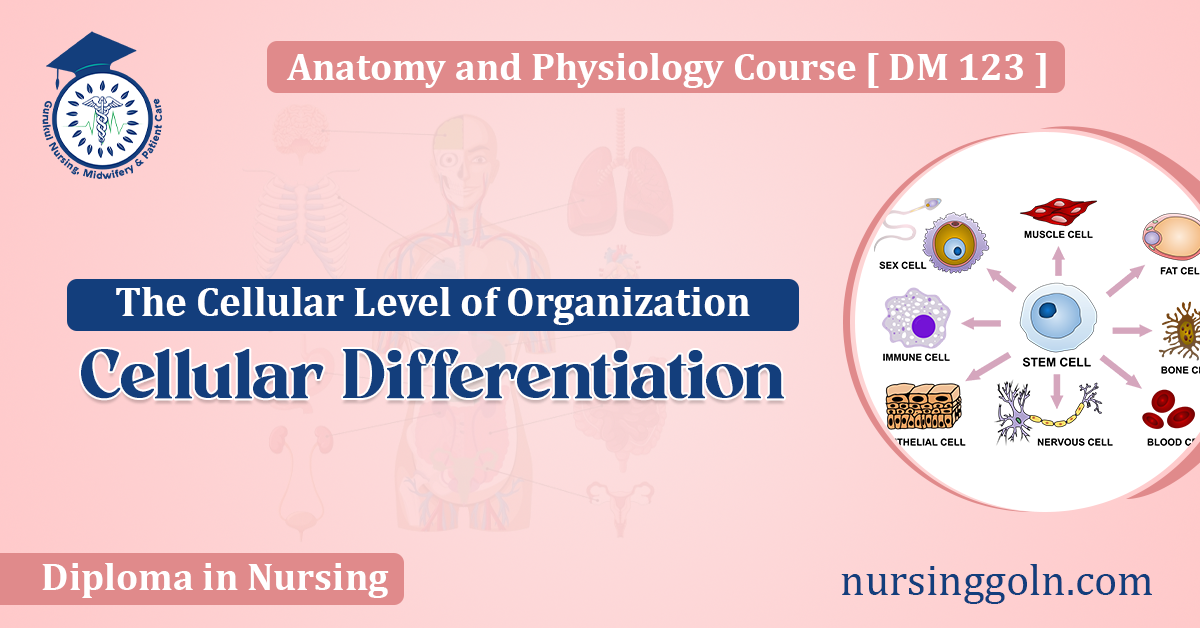Every multicellular organism, from the simplest moss to the most complex mammal, starts life as a single cell. As this cell divides and multiplies, a remarkable transformation occurs. Not every cell remains the same. Through a process called cellular differentiation, cells take on specific roles and functions, allowing the development of tissues, organs, and systems that make life possible. In this article, we will explore cellular differentiation, the intricate process that leads to the vast diversity of cell types in an organism, and its significance in the grand scheme of biological organization.
Cellular Differentiation: The Cellular Level of Organization

Understanding the Basics
- What is Cellular Differentiation? Cellular differentiation is the process through which a cell undergoes changes in its function, size, shape, membrane potential, metabolic activity, responsiveness to signals, and more. It leads to the specialization of cells for different functions.
- Why is it Important? Differentiation is crucial for the development, growth, and survival of multicellular organisms. Differentiated cells cooperate in a coordinated manner to perform the complex tasks necessary for the organism’s existence. For example, while a neuron transmits electrical impulses, a red blood cell is responsible for oxygen transport. Each of these cells, though stemming from the same origin, has differentiated to perform a specific role.
The Journey from a Single Cell to Many
Zygote to Multicellularity: It all begins with the fusion of sperm and egg, forming a zygote. As the zygote divides, it forms a cluster of cells called blastomeres. These cells are initially pluripotent, meaning they have the potential to differentiate into any cell type.
From Pluripotency to Specialization: As development progresses, pluripotent cells begin to commit to certain lineages. These commitments are often driven by signals from surrounding cells or from the environment. For example, in humans, around the third week of embryonic development, cells start to form three distinct layers: the ectoderm, mesoderm, and endoderm. Each of these layers gives rise to specific tissues and organs in the adult body.
Cell Fate Determination: The decisions made by a cell regarding which path to take in differentiation are influenced by intrinsic factors (like its genetic makeup) and extrinsic factors (like chemical signals from neighboring cells). These decisions ensure that cells in a particular region of the embryo will differentiate in a coordinated manner to form tissues and organs.
Genetic Regulation and Differentiation
Differentiated cells have the same DNA, yet they perform vastly different functions. How is this possible?
- Gene Regulation: The answer lies in the regulation of gene expression. Specific sets of genes are turned on or off in each cell type. For example, genes critical for muscle contraction are active in muscle cells but not in neurons.
- Transcription Factors: These are proteins that bind to DNA and regulate gene expression. They play crucial roles in determining cell fate. For instance, the presence of certain transcription factors can lead a pluripotent cell to commit to becoming a neuron rather than a muscle cell.
- Epigenetics: Epigenetic modifications, such as DNA methylation and histone modifications, can turn genes on or off without changing the underlying DNA sequence. These modifications can be influenced by environmental factors and can even be passed down to subsequent generations.

Cellular Differentiation and Regeneration
Some organisms have astounding regenerative abilities. For example, certain salamanders can regrow entire limbs, and starfish can regenerate lost arms. This is possible due to cells that can de-differentiate (reverse differentiation) and then re-differentiate into the required cell types.
In mammals, regeneration is limited. However, humans have stem cells, which are undifferentiated cells with the potential to become various cell types. These cells are central to the body’s repair mechanisms and hold great promise in regenerative medicine.
Differentiation and Disease
Abnormal differentiation can lead to diseases. For example:
- Cancer: Cancer can arise when cells lose their differentiated state and start to proliferate uncontrollably. They no longer respond to the usual regulatory signals that keep cell growth in check.
- Developmental Disorders: Errors in cellular differentiation during development can result in congenital diseases where organs or tissues do not form correctly.
Conclusion
The cellular level of organization is fundamental to understanding the complexity and beauty of life. Cellular differentiation is at the heart of this organization, enabling the formation of intricate systems and structures from a single cell. As we continue to delve deeper into the molecular mechanisms that drive differentiation, we open doors to potential therapeutic interventions for diseases and gain a more profound appreciation for the tapestry of life.
See more:
